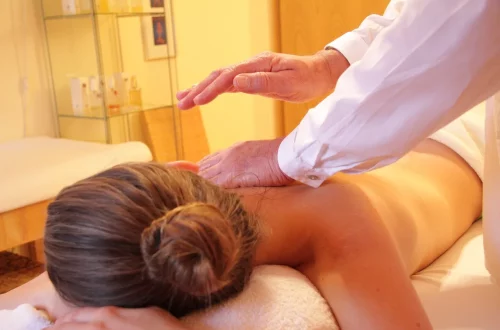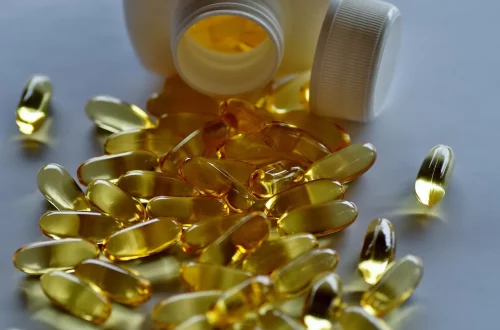
Ultimate Guide to Effective Leg Pump Techniques for Maximum Gains
Leg training is often overlooked in the fitness community, yet it plays a crucial role in overall strength and aesthetics. The legs are the foundation of the body, supporting us in almost every movement we make. Whether you’re an athlete looking to enhance your performance or a fitness enthusiast aiming for a balanced physique, understanding effective leg pump techniques is essential for maximizing gains.
Leg workouts not only improve muscle strength but also enhance metabolism, improve balance, and contribute to better overall health. Engaging the large muscle groups in the legs, such as the quadriceps, hamstrings, glutes, and calves, stimulates the release of growth hormones and boosts your body’s ability to burn fat.
Moreover, a well-designed leg workout can elevate your endurance and resilience, making daily activities easier and enhancing your performance in other areas of fitness. However, the key to effective leg training lies in the execution of specific techniques that not only target the muscles effectively but also ensure safety and prevent injury. By incorporating a variety of exercises and understanding how to maximize the pump during your workouts, you can achieve significant results and develop well-defined legs.
Understanding the Leg Muscle Anatomy
To effectively target the muscles in your legs, it’s crucial to understand their anatomy. The primary muscle groups in the legs include the quadriceps, hamstrings, glutes, and calves. Each of these muscle groups has a distinct function and plays a vital role in movement.
The quadriceps, located at the front of the thigh, consist of four muscles. They are responsible for extending the knee and are heavily engaged in activities such as squatting and jumping. Strong quads not only enhance athletic performance but also support knee stability.
The hamstrings, found at the back of the thigh, are a group of three muscles that flex the knee and extend the hip. These muscles are essential for running, walking, and maintaining balance. Neglecting hamstring training can lead to muscle imbalances and increase the risk of injury.
The glutes, or gluteal muscles, are the largest muscle group in the body and play a significant role in hip movement and stability. Strong glutes are not only aesthetically pleasing but also crucial for overall strength, supporting movements like squats and deadlifts.
Finally, the calves, located at the back of the lower leg, consist of the gastrocnemius and soleus muscles. These muscles are essential for walking, running, and jumping, providing the push-off power needed for these activities.
Understanding these muscle groups allows you to create a targeted leg workout that addresses all areas, ensuring balanced development and minimizing the risk of injury. Additionally, focusing on both the anterior and posterior muscles can enhance your leg pump, leading to greater muscle hypertrophy.
Techniques to Achieve Maximum Pump
Achieving a maximum pump during your leg workouts is crucial for muscle growth and development. Several techniques can help you maximize this effect, ensuring that your muscles are fully engaged and fatigued by the end of your session.
One effective technique is to incorporate high-repetition sets. Performing exercises with higher repetitions, typically in the range of 12-15 reps, can lead to increased blood flow to the muscles, enhancing the pump. This approach is particularly effective for isolation exercises like leg extensions and calf raises, where you can focus on squeezing the muscle at the peak of each movement.
Another technique is to utilize supersets. This involves performing two exercises back-to-back without rest. For example, pairing squats with lunges or leg press with leg curls can create an intense workout that maximizes muscle engagement. Supersets increase the intensity of your workout and keep your heart rate elevated, further promoting blood flow and the pump effect.
Additionally, consider incorporating drop sets into your routine. This technique involves performing an exercise until failure, then immediately reducing the weight and continuing the set. For instance, if you’re doing leg presses, you might start with a heavy weight and, after reaching failure, quickly drop the weight and continue for more reps. This method pushes your muscles to their limits and enhances the pump significantly.
Mind-muscle connection is another vital aspect of achieving a great leg pump. Focus on the muscles you are working during each exercise, ensuring you engage them fully. This mental focus can significantly enhance the effectiveness of your workouts and lead to better results over time.
Finally, don’t forget about proper hydration and nutrition. Ensuring that your body is well-hydrated and fueled with the right nutrients can make a significant difference in your workout performance and the pump you achieve. Consuming carbohydrates before your workout can provide the energy necessary for high-intensity training, while protein post-workout aids in recovery and muscle growth.
Common Exercises for Leg Pump
To effectively achieve a leg pump, it’s essential to include a variety of exercises that target all major muscle groups in the legs. Here are some of the most effective exercises to incorporate into your leg workout routine.
Squats are a foundational exercise for building strength and size in the legs. They engage the quadriceps, hamstrings, and glutes, making them a compound movement that promotes overall leg development. Variations such as front squats, sumo squats, and goblet squats can add variety and target different muscle groups.
Leg presses are another excellent compound exercise that isolates the quadriceps and glutes. Adjusting your foot placement can shift the focus to different parts of the leg, allowing you to customize your workout for maximum effectiveness.
Lunges, whether performed in the traditional format or as walking lunges, are fantastic for building balance and stability while targeting the entire leg. They emphasize the quadriceps and glutes while also engaging the hamstrings and calves.
For isolation work, leg extensions and leg curls are essential. Leg extensions specifically target the quadriceps, while leg curls focus on the hamstrings. These exercises can help create the mind-muscle connection necessary for achieving a great pump.
Calf raises are crucial for developing the lower legs. Both standing and seated calf raises should be included to ensure that you target both the gastrocnemius and soleus muscles effectively.
Incorporating these exercises into your routine with the right techniques will not only enhance your leg pump but also contribute to balanced muscle development. Remember to focus on proper form and technique to minimize the risk of injury and maximize your gains.
Tips for Recovery and Growth
Recovery is a critical component of any workout regimen, particularly after intense leg training. Proper recovery strategies can significantly impact your muscle growth and performance in subsequent workouts.
Firstly, ensure that you are allowing adequate time for recovery between leg workouts. Muscles need time to repair after being subjected to stress, and training them too frequently can lead to overtraining and injury. A good rule of thumb is to allow at least 48 hours of recovery before training the same muscle group again.
Incorporating active recovery techniques can also be beneficial. Activities like light walking, stretching, or yoga can help promote blood flow to the muscles and alleviate soreness without placing additional strain on them.
Nutrition plays a vital role in recovery as well. Consuming a balanced diet that includes sufficient protein, carbohydrates, and healthy fats is essential for muscle repair and growth. Post-workout meals should focus on replenishing glycogen stores and providing the necessary nutrients for recovery.
Hydration is another crucial aspect. Dehydration can hinder performance and recovery, so ensure you are drinking enough fluids before, during, and after your workouts. Electrolyte balance is also important, particularly if you are engaging in intense workouts or sweating heavily.
Lastly, consider incorporating foam rolling or massage therapy into your recovery routine. These techniques can help alleviate muscle tension, improve circulation, and promote faster recovery.
By focusing on recovery strategies, you can maximize your leg pump results and ensure that your muscles are prepared for continued growth in future workouts.
—
**Disclaimer:** This article is for informational purposes only and does not constitute medical advice. Please consult with a healthcare professional before starting any new exercise or nutrition program, especially if you have any pre-existing health conditions or concerns.




